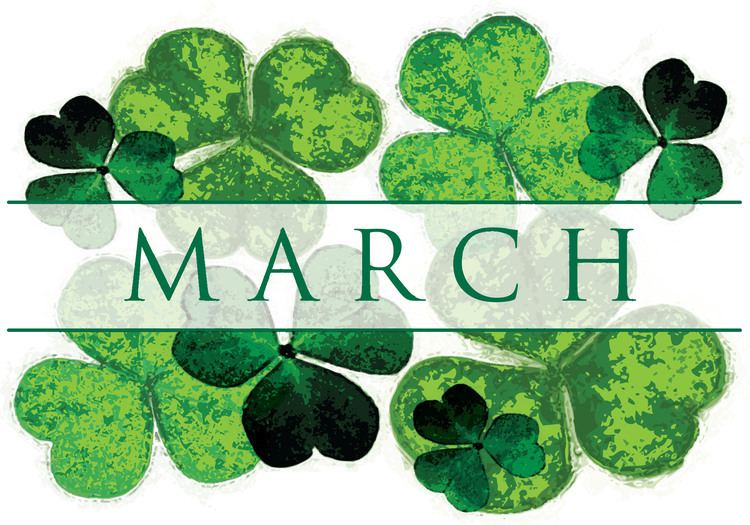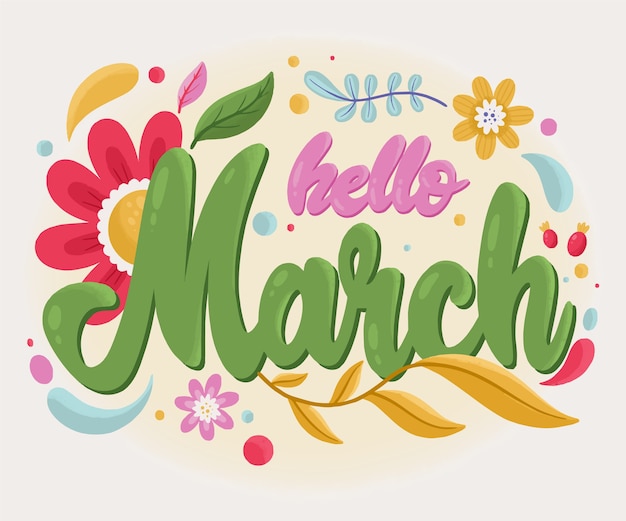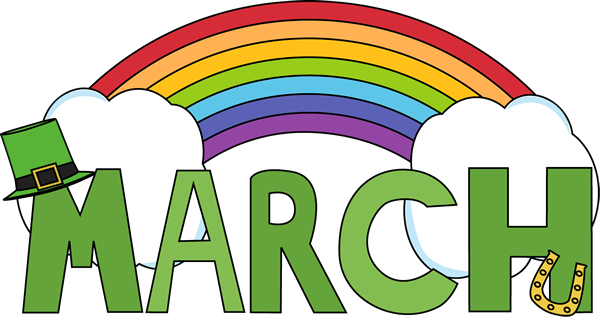Have you ever stopped to truly think about the month of March? It's a time of year that, in a way, brings about so much transformation across the globe. For many, it signals new beginnings, perhaps a fresh start after winter's chill. For others, it marks a different kind of shift, a transition into cooler days. This month, often called March Stephanie in some contexts, holds a rather unique position in our yearly cycle, offering a blend of ancient traditions and modern happenings. It's a period that truly merits a closer look, wouldn't you say?
There's a good deal more to March than just its well-known holidays, you know. It’s a month packed with facts that might just surprise you, from its historical roots to its seasonal peculiarities. We'll be looking at what makes this time of year special, exploring its calendar details, and even touching on some practical aspects that March brings into our homes and gardens. So, stick around, and let's uncover some of the fascinating things about this third month.
This exploration is really about getting to know March a little better, seeing it not just as a date on the calendar but as a period with its own distinct character. We'll explore why it's a month of such contrasts, and what kind of events and natural shifts typically unfold within its thirty-one days. It's almost like peeling back layers to find what's truly interesting, isn't it?
Table of Contents
- The Essence of March: A Time of Change
- Unpacking the Meaning of "March"
- Beyond Holidays: Surprising Facts About March
- Looking Ahead: March's Future Celebrations
- Frequently Asked Questions About March
The Essence of March: A Time of Change
March is, without a doubt, a month of significant shifts, particularly when we consider the natural world. It marks a very important turning point for many parts of the globe, a period where the seasons are, in a way, trading places. This makes it a rather dynamic time, full of subtle and not-so-subtle changes that affect our daily lives and surroundings. It's a time when you can really feel the planet doing something different.
March's Place in the Calendar
The calendar tells us that March holds a specific spot, which is that it's the third month of the year. This is true whether you look at the Gregorian calendar or the Julian calendar, both of which assign March this position. It's also a month that has a consistent number of days, you know, always thirty-one of them. This makes it one of the longer months, providing ample time for all the seasonal transitions and events that typically happen.
When you consider the passage of time, March comes after February and before April, creating a natural progression. This placement is quite significant because it positions March as the gateway to new seasons for many, a kind of bridge between the older and the newer parts of the year. It's a rather fixed point, in a way, that helps us keep track of our annual cycle.
The Dual Nature of March's Seasons
One of the most interesting aspects of March is its truly dual seasonal identity. In the Northern Hemisphere, which includes places like North America, Europe, much of Asia, and a portion of Africa, March is actually the first month of spring. This means we often start seeing signs of new life, perhaps plants beginning to grow, and slightly warmer temperatures. Yet, it's worth noting that even in these areas, colder days can still happen; spring's arrival isn't always a sudden, warm embrace.
Conversely, in the Southern Hemisphere, March takes on a completely different character. There, it marks the first month of fall, or autumn. So, while folks up north are watching things bloom, people down south are seeing leaves change colors and feeling a distinct coolness in the air. This contrast is quite striking and highlights how March serves as a global marker for these significant seasonal shifts. It’s almost like two different worlds are experiencing March at the same time, but in opposite ways, isn't it?
Unpacking the Meaning of "March"
The very word "March" has a history that goes beyond just being a month's name; it has a meaning that's rather intriguing. It refers to a border region, you see, or a district that was originally set up to defend a boundary. This usage is usually found when talking about these areas in the plural, like "the Marches." It gives the month a kind of historical weight, a sense of being a protective or defining edge.
Thinking about how to use "March" in a sentence, it's clear that its meaning can extend beyond the calendar. It connects to ideas of boundaries and defense, perhaps reflecting its position as a transition point between seasons or even between the old year and the new in ancient times. This underlying meaning adds a bit of depth to our understanding of the month, suggesting it’s not just a random name but one with historical significance. It's quite interesting to consider, really, how words carry such old meanings.
Beyond Holidays: Surprising Facts About March
Many people associate March primarily with St. Patrick's Day and the official start of spring, but there's actually a lot more to this month than just those well-known celebrations. It's a period that holds a number of surprising facts, some of which might just change the way you think about it. These facts cover a range of topics, from practical uses to historical tidbits, showing just how varied March truly is. So, let's explore some of these less-talked-about aspects, shall we?
March's Practical Side: Home and Garden
When you think about the practical aspects of March, it's a month that actually offers quite a bit for the home. The text mentions that March provides "art, objects, and utility for the home." This suggests that it's a time when people might be looking to refresh their living spaces, perhaps with new decorations or useful items. It could also mean that certain types of home-related activities become more prevalent as the weather changes. It’s a period when many of us start to think about sprucing things up, isn't it?
For those who enjoy gardening, March can be a very active time, especially in the Northern Hemisphere as spring begins to take hold. While the provided text doesn't go into specific gardening tips, it does mention "gardening tips" as something associated with March 2025. This implies that it’s a key month for planting, preparing beds, or planning for the growing season ahead. It's almost like a natural signal to get your hands dirty and start thinking about what you'd like to grow this year.
Calendar Insights for March
Looking at the calendar for March, there are several details that are quite useful for planning. For instance, you can view the month calendar of March for specific years, like March 2021 or March 2022, and see details such as week numbers. This is pretty handy for scheduling or just keeping track of time. It's a straightforward way to organize your month, you know, seeing all the days laid out.
Beyond just the days and weeks, these calendar views also let you see for each day the sunrise and sunset times. This is a neat feature, particularly as the days tend to get longer in the Northern Hemisphere during March, a clear sign of spring's progress. Knowing these times can be useful for planning outdoor activities or simply observing the changing light. It’s a very practical detail that helps you connect with the natural rhythm of the month.
The text also mentions March 2025 holidays and events, including the first day of spring and Daylight Saving Time. These are significant markers that many people look forward to. It also points to other associated elements like history, recipes, moon dates, folklore, and even birthdays. This really shows how much information and how many different kinds of happenings can be tied to this one month. It’s almost like a whole little world contained within thirty-one days, isn't it?
Looking Ahead: March's Future Celebrations
As we consider March, it's clear that it will continue to be a month filled with important dates and shifts. For example, the mention of March 2025 holidays and events reminds us that the pattern of seasonal changes and traditional observances keeps repeating. Things like the first day of spring and Daylight Saving Time are annual occurrences that shape our routines and perceptions of the year. It’s a bit like a dependable rhythm that we can count on, year after year.
This ongoing cycle means that March will always be a time for new beginnings in some places and a transition to cooler weather in others. It will continue to be a month where people look for gardening tips, perhaps try new recipes, and certainly observe the moon's phases. The folklore and historical aspects associated with March will also carry forward, adding richness to its character. It's a month that just keeps giving, in a way, with its blend of the familiar and the surprising. Learn more about time and seasons on our site, and you might also find this page interesting for other details: .
Frequently Asked Questions About March
People often have questions about the month of March, given its unique position and characteristics. Here are a few common inquiries that might come to mind, helping to clarify some of the details we've discussed. These questions help us get a better grip on what March is really about, you know, beyond just its name.
Is March the start of spring everywhere?
No, actually, it's not. March is the first month of spring only in the Northern Hemisphere, which includes places like North America and Europe. In the Southern Hemisphere, however, it marks the beginning of fall or autumn. This is a very interesting contrast, showing how the seasons are opposite on different parts of the planet during the same month. It's almost like a mirror image, isn't it?
How many days does March have?
March consistently has thirty-one days. This is true for both the Gregorian and Julian calendars, which are the main calendar systems used today. So, you can always count on March being a longer month, giving you plenty of time to experience its seasonal shifts and events. It's a fixed number, which is quite helpful for planning, you know?
What is the meaning of the word "March" itself?
Beyond being a month's name, the word "March" actually refers to a border region. It's like a district that was originally set up to defend a boundary, and this meaning is typically used in the plural, like "the Marches." This historical meaning gives the month a kind of deeper significance, suggesting it’s a point of transition or a protective edge. It’s a rather old meaning, in a way, that still resonates.



Detail Author:
- Name : Penelope Legros
- Username : okuneva.estrella
- Email : jamie.mayer@hotmail.com
- Birthdate : 1982-10-22
- Address : 4640 Tillman Land East Katlynn, SD 75914
- Phone : (212) 705-7753
- Company : Labadie-Brekke
- Job : Procurement Clerk
- Bio : Quisquam voluptatem labore voluptatum quaerat aut. Quibusdam aliquam quibusdam occaecati. Est est ad quo asperiores excepturi.
Socials
tiktok:
- url : https://tiktok.com/@yesenia_cole
- username : yesenia_cole
- bio : Nam libero eveniet nesciunt eum dignissimos.
- followers : 797
- following : 2519
twitter:
- url : https://twitter.com/cole2015
- username : cole2015
- bio : Vel ut natus omnis suscipit omnis est. Unde doloremque facilis delectus. Quas molestias eos omnis natus.
- followers : 3558
- following : 2874
linkedin:
- url : https://linkedin.com/in/yesenia412
- username : yesenia412
- bio : Occaecati excepturi nesciunt ut praesentium nisi.
- followers : 4240
- following : 247
facebook:
- url : https://facebook.com/yeseniacole
- username : yeseniacole
- bio : Rerum quia aperiam corrupti sunt aliquid.
- followers : 2581
- following : 1626
instagram:
- url : https://instagram.com/yesenia7255
- username : yesenia7255
- bio : Ut cum sed non veritatis. A delectus sit veritatis eos explicabo dignissimos.
- followers : 1130
- following : 439